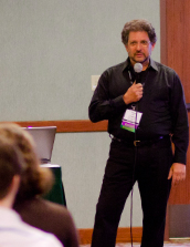In Listening To Songs – Parts 1, 2, 3 and 4, we explored how to listen for the HOOK, CHORUS, PRE-CHORUS. We talked about hearing these combination of song parts as key to knowing the structure of a song. The remaining part we want to listen for is the BRIDGE. Where does it live and what does it do? Very simply stated. A BRIDGE bridges. It connects two areas together into one.
In a song, the BRIDGE usually connects two similar parts of music and lyric. The most common example is a CHORUS to a CHORUS, but a BRIDGE can also connect in and out of an instrumental section. Thus the ongoing debate: Is an instrumental in a recording identified with the song considered part of the song or part of the arrangement?
But what else does the BRIDGE do? It gives us a sense of relief from hearing the same section of a song over and over. It allows us to get away from music and lyric established in the VERSE PRE and CHORUS to go somewhere else musically and lyrically. When a BRIDGE is successful, you get a sense of going somewhere new, which then leads you back to a place that is familiar. BRIDGES are usually short in duration. When written well their minimal size packs a powerful punch.
BRIDGES are difficult to write for a number of reasons. They force a composer to have to move from a base key center to a new key center and then back to the original. Having some understanding of harmony and chord progressions is helpful when composing a BRIDGE. Lyrically, a BRIDGE is difficult to write because it forces the lyricist to summarize what the song is about or point the lyric to a future moment in time as well as leading the listener forward to the CHORUS.
BRIDGE listening should be done in a quiet place. Focusing on hearing the BRIDGE is a very important skill to have as a songwriter. The more you can hear a BRIDGE, the better you will get at writing a BRIDGE. Bridge the great divide and listen to BRIDGES.
The art of writing is rewriting and listening. Randy Klein

